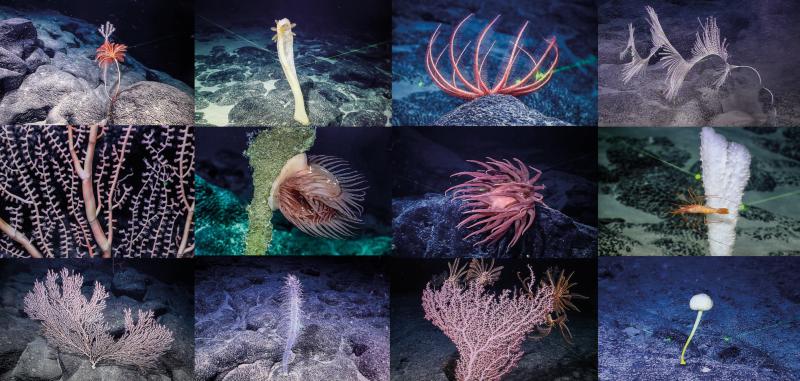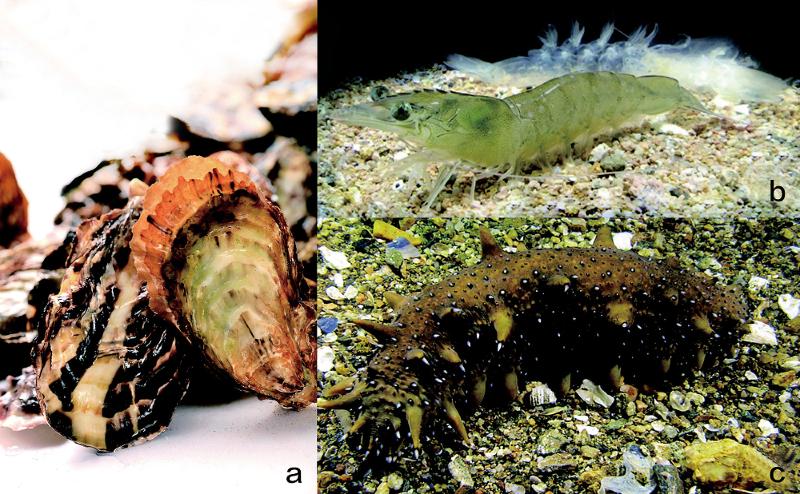Integrating applied and basic research on marine life, IOCAS researchers help promote aquaculture, marine biodiversity, ecological health, and sustainable use of bio-resources.

The deep-sea sampling activity organized by IOCAS has led to the collection of diverse marine samples. (Image by IOCAS)
China's aquaculture production leads the world, exceeding 40 million tonnes annually. Underlying this success is mass cultivation of three important food products that were formerly imported: kelp, Pacific white shrimp, and bay scallops, making them widely available for Chinese consumers.
Research at the Institute of Oceanology, Chinese Academy of Sciences (IOCAS) leads to improved breeding grounds for these aquaculture species. From fundamental studies on marine plants and animals, to the sustainable use of marine bio-resources, researchers at IOCAS’s Experimental Marine Biological Laboratory have revealed the biological processes of marine organisms, including their reproduction, growth, physiological and biochemical development, metabolism, immunity, and genetic variation, and developed leading technologies for marine agriculture, playing a key role in establishing China as a leader in aquaculture and fishing industries.
Kelp is a common food on Chinese dining tables now, but it was once available only as an import from abroad. Genetic studies on algae by IOCAS researchers have led to hybrid technologies for breeding new cultivars in China. Having built an algae germplasm bank, they revealed the genetic expressions of algae reproductive organs, completed whole-genome assembly of wakame, an annual algae, and developed a haploid cloning technique for breeding kelp and wakame, solving the problem of hybrid sterility.
Researchers from the IOCAS laboratory have also studied economically valuable aquaculture organisms, like Pacific white shrimp, Pacific oyster, and sea cucumber, contributing to their selective breeding. IOCAS was the first to construct whole-genome maps of these organisms, decoding their genes, and shedding light on their genomic selection.

IOCAS is the first to construct whole-genome maps of Pacific oyster (a), Pacific white shrimp (b), and sea cucumber (c), contributing to their molecular breeding. (Image by IOCAS)
For Pacific white shrimps, IOCAS researchers found that the expansion of genes pertaining to vision and locomotion has enabled advantageous eyesight and rapid nerve signal conduction, allowing shrimps to better adapt to their habitat. Frequent moulting can also be explained by an intensified signal pathway through gene expansion and positive selection. The findings have potential to accelerate genetic improvements in shrimp culture, enhancing aquaculture production.
A promising model animal for regenerative medicine, sea cucumber has long fascinated scientists. But progress exploring its genetic underpinnings is slow. Through genome sequencing, the IOCAS team has identified genes highly expressed during visceral regeneration, which might be responsible for the regenerative capacity of sea cucumbers. Their findings on how sea cucumbers restore damaged or lost body parts may bring new insights for regenerative medicine.
IOCAS was also among the first to elucidate the molecular and cellular antimicrobial mechanisms of marine fish and shellfish. Their research unveils fundamental differences between bony fish and mammals in pyroptosis, an inflammatory form of programmed cell death, and expands understanding about innate immunity of bony fish.
These basic biological studies have informed developing technologies to make best use of bio-resources. From algae and marine microbiomes, IOCAS researchers have developed natural products with antibacterial or anti-cancer benefits.
In light of the lack of effective drugs for jellyfish stings, they have studied toxin structure, composition, mechanisms, and detoxification targets, leading to an antidote for jellyfish stings. The technology was transferred at a licencing fee of RMB 10.5 million, offering potential for health and economic benefits.

